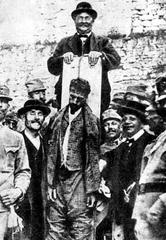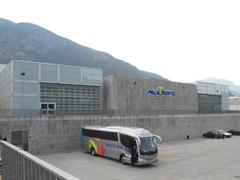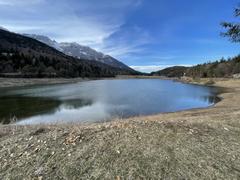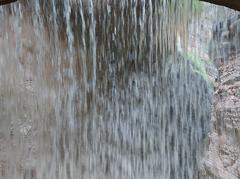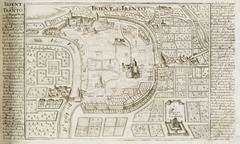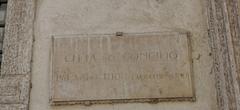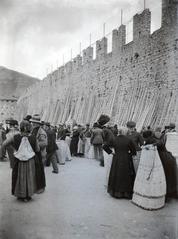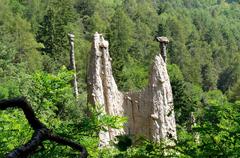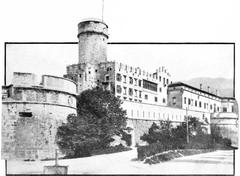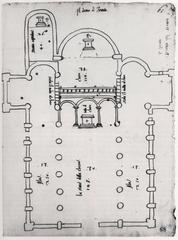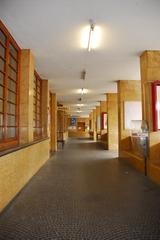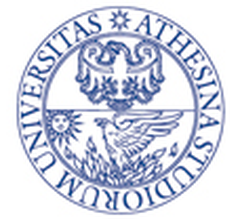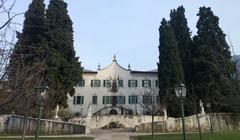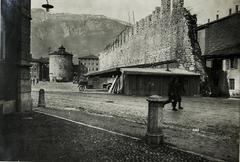
Comprehensive Guide to Visiting MUSE - Museo delle Scienze, Trento, Italy
Date: 17/07/2024
Introduction
Nestled in the heart of the Italian Alps, MUSE - Museo delle Scienze in Trento, Italy, is a beacon of scientific discovery and environmental awareness. Opened on July 27, 2013, as part of the ‘Le Albere’ urban redevelopment project, the museum was designed by renowned Italian architect Renzo Piano, known for his work on the Centre Pompidou in Paris and The Shard in London. MUSE stands as a testament to Piano’s vision of blending modernity with sustainability, featuring a structure inspired by the jagged peaks of the nearby Dolomites (MUSE Official Website). The museum’s design incorporates eco-friendly elements such as solar panels, a geothermal heating system, and a rainwater collection system, making it a model of sustainable architecture (Renzo Piano Building Workshop).
MUSE’s establishment reflects a broader trend in Europe towards creating interactive and educational spaces that promote scientific literacy and environmental stewardship. Trento, historically a center of education and research, provides an ideal backdrop for such an institution. Home to the University of Trento, one of Italy’s top universities, the city boasts a rich history dating back to the Roman Empire (University of Trento). With its engaging exhibitions, innovative architecture, and commitment to education and sustainability, MUSE has quickly become a major tourist attraction and a vital cultural landmark in Trento.
Table of Contents
- History and Significance
- Exhibitions and Collections
- Visitor Information
- Travel Tips
- Educational Programs and Community Engagement
- Cultural Impact
- Future Prospects
- FAQ
History and Significance
Origins and Establishment
MUSE - Museo delle Scienze, located in Trento, Italy, is a modern science museum that opened its doors to the public on July 27, 2013. The museum was conceived as part of the broader urban redevelopment project known as the “Le Albere” district, which aimed to revitalize a former industrial area. The project was spearheaded by the renowned Italian architect Renzo Piano. The museum’s design reflects Piano’s commitment to sustainability and innovation, featuring a structure that integrates seamlessly with the surrounding landscape (MUSE Official Website).
Architectural Significance
The architectural design of MUSE is a testament to Renzo Piano’s vision of blending modernity with environmental consciousness. The building’s structure is inspired by the jagged peaks of the Dolomites, a UNESCO World Heritage site located nearby. The museum’s layout is characterized by its use of natural light, open spaces, and sustainable materials. The building is equipped with solar panels, a geothermal heating system, and a rainwater collection system, making it a model of eco-friendly architecture (Renzo Piano Building Workshop).
Historical Context
The establishment of MUSE is part of a broader trend in Italy and Europe to create interactive and educational spaces that promote scientific literacy and environmental awareness. The museum’s location in Trento is historically significant as the city has long been a center of education and research. Trento is home to the University of Trento, one of Italy’s top universities, and has a rich history dating back to the Roman Empire. The city’s commitment to education and innovation made it an ideal location for a state-of-the-art science museum (University of Trento).
Exhibitions and Collections
MUSE’s exhibitions are designed to engage visitors of all ages and backgrounds. The museum’s permanent collection is divided into several thematic areas, each focusing on different aspects of science and natural history. Key exhibits include:
-
The Big Bang and the Evolution of the Universe: This section explores the origins of the universe, the formation of galaxies, and the development of life on Earth. Interactive displays and multimedia presentations make complex scientific concepts accessible to visitors (MUSE Exhibitions).
-
Biodiversity and Ecosystems: This area highlights the rich biodiversity of the Trentino region and the importance of preserving natural habitats. The exhibit features life-sized models of animals, interactive displays, and information on conservation efforts (MUSE Biodiversity).
-
Sustainability and Innovation: This section focuses on the challenges and opportunities of sustainable development. Exhibits cover topics such as renewable energy, climate change, and sustainable urban planning. The museum also hosts temporary exhibitions that address current scientific and environmental issues (MUSE Sustainability).
Visitor Information
Tickets and Visiting Hours
MUSE offers a range of ticket options to accommodate different visitor needs. General admission tickets can be purchased online or at the museum entrance. The museum is open from Tuesday to Sunday, with extended hours during the summer months. It is advisable to check the MUSE official website for the most up-to-date information on ticket prices and visiting hours (MUSE Tickets).
Accessibility
MUSE is committed to being accessible to all visitors. The museum is equipped with ramps, elevators, and accessible restrooms. Wheelchairs are available upon request, and trained staff are on hand to assist visitors with special needs (MUSE Accessibility).
Travel Tips
Getting There
Trento is well-connected by train, bus, and car. The museum is located within walking distance of the Trento railway station, making it easily accessible for visitors arriving by public transport. There are also ample parking facilities nearby for those traveling by car.
Nearby Attractions
While in Trento, visitors can explore a variety of historical sites and attractions. Notable nearby attractions include:
- Buonconsiglio Castle: A historic castle that offers panoramic views of the city and exhibits on Trento’s history.
- Piazza Duomo: The central square of Trento, featuring the stunning Trento Cathedral and the Fountain of Neptune.
- Trento Science Museum: Another museum dedicated to science and natural history, offering complementary exhibits to MUSE (Trento Historical Sites).
Educational Programs and Community Engagement
MUSE is not just a museum but also a center for education and community engagement. The museum offers a wide range of educational programs for schools, families, and adults. These programs include guided tours, workshops, and hands-on activities that encourage visitors to explore scientific concepts in a fun and interactive way. MUSE also collaborates with local schools and universities to promote STEM (Science, Technology, Engineering, and Mathematics) education (MUSE Education).
Cultural Impact
Since its opening, MUSE has had a significant cultural impact on the city of Trento and the broader region. The museum has become a major tourist attraction, drawing visitors from around the world. It has also played a key role in promoting scientific literacy and environmental awareness in the community. MUSE’s innovative approach to science education has been recognized with several awards, including the European Museum of the Year Award in 2015 (European Museum Forum).
Future Prospects
Looking ahead, MUSE aims to continue its mission of promoting scientific knowledge and environmental sustainability. The museum plans to expand its educational programs and develop new exhibitions that address emerging scientific and environmental issues. MUSE is also committed to maintaining its status as a leader in sustainable architecture and green building practices (MUSE Future Plans).
FAQ
- What are the visiting hours for MUSE? MUSE is open from Tuesday to Sunday, with extended hours during the summer months. Check the official website for current hours.
- How much are tickets to MUSE? Ticket prices vary, and it is best to consult the MUSE official website for the most up-to-date information.
- Is MUSE accessible for visitors with disabilities? Yes, MUSE is fully accessible, with ramps, elevators, and accessible restrooms available.
Call to Action
Plan your visit to MUSE - Museo delle Scienze today and discover the wonders of science and nature. Follow us on social media for the latest updates and special events. Download our mobile app for an enhanced museum experience and check out our other related posts for more travel tips and information on Trento’s attractions.
Conclusion
In summary, MUSE - Museo delle Scienze in Trento, Italy, is a modern science museum that combines innovative architecture, engaging exhibitions, and a commitment to education and sustainability. Its establishment has had a profound impact on the local community and continues to inspire visitors to explore the wonders of science and the natural world.
References
- MUSE Official Website. (n.d.). Retrieved from https://www.muse.it
- Renzo Piano Building Workshop. (n.d.). Retrieved from https://www.rpbw.com
- University of Trento. (n.d.). Retrieved from https://www.unitn.it
- MUSE Exhibitions. (n.d.). Retrieved from https://www.muse.it/en/Esplora/mostre-temporanee/Pagine/default.aspx
- MUSE Accessibility. (n.d.). Retrieved from https://www.muse.it/en/Visit/Pages/Accessibility.aspx
- MUSE Future Plans. (n.d.). Retrieved from https://www.muse.it/en/Esplora/mostre-temporanee/Pagine/default.aspx


